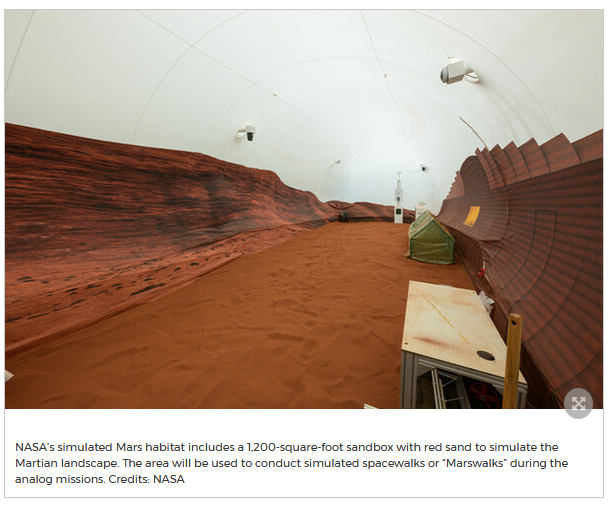On April 11, 2023, media personnel have been invited to visit NASA’s Mars habitat simulation at the Johnson Space Center in Houston. The habitat will be utilized by four volunteers who will embark on a year-long Mars mission this summer, which will aid NASA in preparing for human exploration of Mars. The CHAPEA habitat, or Crew Health and Performance Exploration Analog, has three simulations planned, with the first starting in June. These volunteers are not astronauts, but they will carry out various mission activities, including spacewalk simulations, robotic operations, habitat maintenance, personal hygiene, exercise, and crop growth. The mission will also involve environmental stressors, such as resource limitations, isolation, and equipment failure, to replicate the Mars environment as accurately as possible.
The media event will provide an opportunity for journalists to interact with specialists and take pictures and videos inside the habitat. However, the crew members will not be present as they are scheduled to begin their training for the simulated mission at NASA Johnson later this spring. International media must request accreditation before 5 p.m. CDT on March 27, while U.S. media must do so by April 3, as media accreditation is limited due to space constraints. NASA’s Artemis missions are intended to facilitate long-term science and exploration on the Moon, with the lessons learned providing a foundation for the agency’s plan to send astronauts to Mars, which is known as the Moon to Mars exploration approach.
More About Mars
Mars, the fourth planet from the Sun, has been a significant focus of NASA’s exploration efforts. The Red Planet has long fascinated scientists and the general public due to its potential for harboring past or present life and its potential for future human colonization. NASA has launched several successful missions to Mars since the 1960s, with major milestones including:
- Mariner 4 (1965): The first successful flyby of Mars, Mariner 4 captured the first close-up images of another planet, returning 21 photos that revealed a cratered surface.
- Viking 1 and 2 (1976): Both Viking missions consisted of an orbiter and a lander. The orbiters photographed the Martian surface, while the landers conducted the first successful landings on Mars. The Viking landers carried out experiments to detect signs of life but produced inconclusive results.
- Mars Global Surveyor (1997): This orbiter mapped Mars’ surface and provided important information about the planet’s topography, climate, and geology, including the discovery of evidence of water erosion in the past.
- Mars Pathfinder (1997): Featuring the Sojourner rover, the Mars Pathfinder mission was the first to utilize a rover on the Martian surface. Sojourner conducted experiments and explored the terrain around the lander, which also served as a weather station.
- Mars Odyssey (2001): This orbiter’s primary mission was to search for water and study Mars’ geology and radiation environment. Mars Odyssey remains active and continues to send valuable data back to Earth.
- Mars Exploration Rovers (MER), Spirit and Opportunity (2004): These twin rovers were designed for a 90-day mission but exceeded expectations by operating for years. Spirit operated until 2010, while Opportunity continued until 2018. Both rovers made significant discoveries, including evidence of past water activity on Mars.
- Mars Reconnaissance Orbiter (MRO, 2006): MRO has been essential in studying Mars’ surface, climate, and potential landing sites for future missions. Its high-resolution camera has provided detailed images of the planet’s surface.
- Phoenix Mars Lander (2008): The Phoenix mission aimed to study the history of water and habitability potential in Mars’ ice-rich soil. The lander confirmed the presence of water-ice in the Martian subsurface.
- Mars Science Laboratory (MSL), Curiosity rover (2012): Curiosity has provided valuable information about Mars’ geology, climate, and habitability. Among its most significant discoveries is evidence of ancient riverbeds and the presence of organic molecules, suggesting that Mars may have once supported life.
- Mars Atmosphere and Volatile Evolution (MAVEN, 2014): MAVEN’s primary goal is to study Mars’ upper atmosphere, ionosphere, and interactions with the Sun and solar wind. It has provided crucial data about the loss of Mars’ atmosphere over time.
These missions represent some of the key milestones in NASA’s exploration of Mars.

